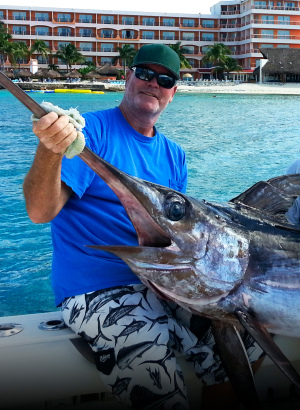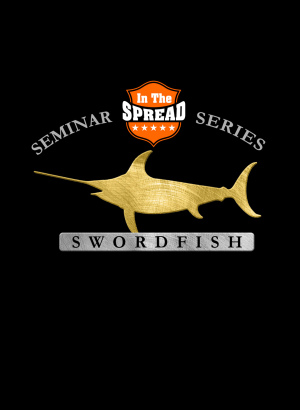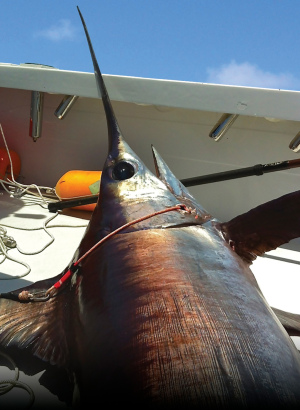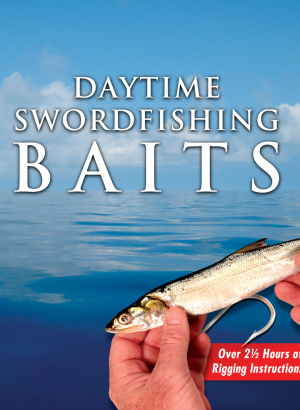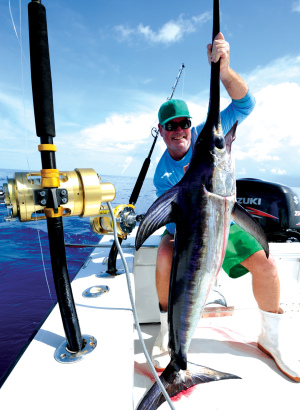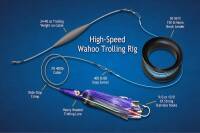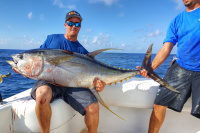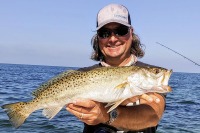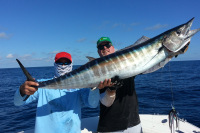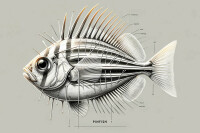Venture into the world of swordfish fishing with our comprehensive guide on choosing the right hook. From J-hooks to circle hooks, learn how to enhance your catch rate and land the ultimate trophy. Essential swordfishing tips and tricks included.
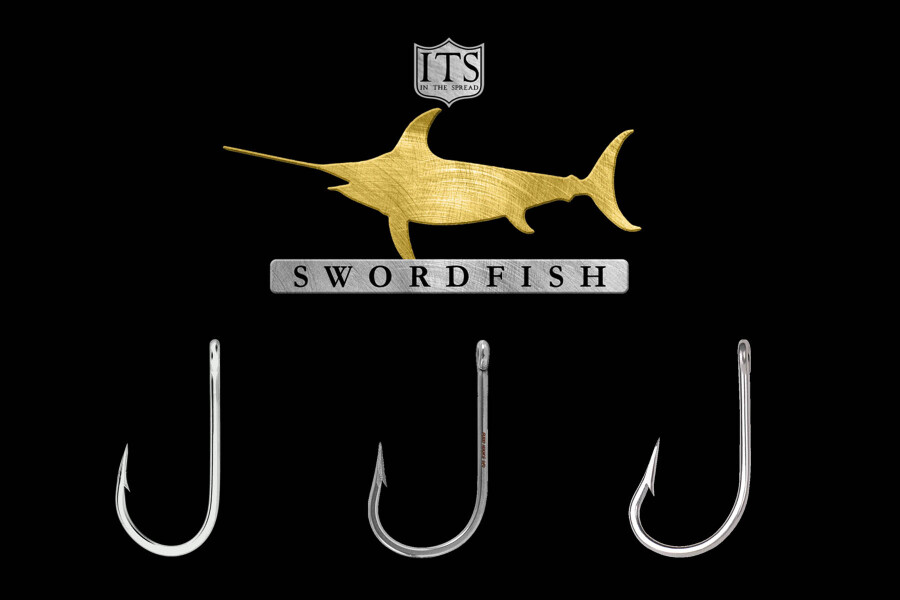
Hooks for Swordfish
Unveiling the Swordfish
The swordfish, scientifically known as Xiphias gladius, is a marvel of the ocean, known for its elongated, sword-like bill and its swift, agile movements through the water. They are a pelagic fish found in the Atlantic, Pacific, and Indian Oceans, often dwelling in the warmer layers of the oceanic waters. Their streamlined body allows them to swim at speeds up to 64 km/h (40 mph), making them one of the fastest fish in the ocean. A fully grown swordfish can reach a length of up to 4.5 meters (15 feet) and weigh as much as 650 kg (1,430 pounds). Their distinctive bill is not only a weapon for hunting but also a tool to slice through the water with minimal resistance. Understanding the biology and behavior of swordfish can significantly augment the strategy employed in fishing for swordfish.
One of the most important aspects of swordfish fishing is choosing the right hook for your bait and target. The hook is the link between you and the fish, and it can make or break your chances of landing a trophy. In this article, we will discuss the different types of hooks for swordfish, the factors to consider when selecting a hook, and some tips and tricks to improve your hook-up rates.
Article Summary
- There are four main types of hooks for broadbill swordfish: J-hooks, southern tuna style hooks, offset hooks, and circle hooks. Each type has its advantages and disadvantages, depending on the size and type of bait, the fishing method, and the fish behavior.
- When selecting a hook for swordfish fishing, you should consider the following factors: hook size, hook strength, hook type, and bait type. The hook size should match the bait size and the fish size. The hook strength should be able to withstand the force of a swordfish strike and fight. The hook type should suit the fishing method and the fish behavior. The bait type should be attractive and durable for swordfish fishing.
- Some tips and tricks to improve your hook-up rates when fishing for swordfish are: sharpen your hooks regularly, use a stinger hook for large baits, use a rubber band to secure the hook to the bait, use a fluorocarbon leader to reduce visibility, and set the hook firmly when you feel a bite.
Types of Hooks for Swordfish Fishing
There are four main types of hooks for swordfish fishing: J-hooks, southern tuna style hooks, offset hooks, and circle hooks. Each type has its advantages and disadvantages, depending on the size and type of bait, the fishing method, and the fish behavior. Here is a brief overview of each type of hook and its pros and cons.
J-hooks
J-hooks are the most common and traditional type of hooks for swordfish. They have a straight shank and a curved point that forms a J shape. J-hooks are generally considered more productive for swordfish fishing, as they penetrate the soft flesh of the swordfish more easily and securely. They also allow the angler to set the hook manually, which can increase the hook-up rates.
J-hooks come in different sizes, with 9/0, 10/0, and 11/0 being the most commonly used sizes for swords. The size of the hook should match the size of the bait and the fish being targeted. For example, a 9/0 J-hook is suitable for a small squid or mackerel, while a 11/0 J-hook is better for a large bonito or dolphin.
Some of the popular brands and models of J-hooks for swordfish fishing are:
- Mustad: The 7691S hook is a popular choice for swordfish and works great for J-hooks.
- Owner: Owner Jobu hooks in 11/0 and 12/0 sizes: These hooks are made of carbon steel and have a cutting point and a heavy-duty shank. They are suitable for big game fishing with large baits and can handle the toughest swordfish.
- FUDO: This brand offers tuna ringed eye hooks and super ocean "Hays" aida ringed eye hooks made of stainless steel, which are great for J-hooks.
The main advantage of J-hooks is that they are more likely to hook and hold a swordfish, especially if the angler sets the hook properly. The main disadvantage of J-hooks is that they can cause more damage to the fish, which can affect its survival and quality. J-hooks are also more prone to foul-hooking, which can result in losing the fish or injuring the angler.
Southern Tuna Style Hooks
Southern tuna style hooks are another type of hooks for swordfish. They have a bend similar to that of a southern tuna and are recommended for daytime swordfish, wahoo, and marlin rigs. They have a straight shank and a curved point that forms a slight angle. Southern tuna style hooks are designed to hook the fish in the corner of the mouth, which can reduce the chances of the fish throwing the hook or cutting the line with its bill.
Southern tuna style hooks come in different sizes, with 10/0, 11/0, and 12/0 being the most commonly used sizes for broadbills. The size of the hook should match the size of the bait and the fish being targeted. For example, a 10/0 southern tuna style hook is suitable for a medium squid or herring, while a 12/0 southern tuna style hook is better for a large mullet or tuna.
Some of the popular brands and models of southern tuna style hooks for swordfish fishing are:
- Mustad Swordfish Hook: The 7691-DT hook in 10/0 are the economical versions of the southern tuna bend hooks that have been the industry standard for swordfish fishing for years
- FUDO Tuna Ringed Eye: These hooks feature the traditional tuna bend throat and offer anglers best in class strength and quality. They are made of premium Japanese stainless steel and hand formed and sharpened by skilled craftsmen in Japan. They come in various sizes from 7/0 to 12/0.
- RJ Boyle Southern Tuna Stainless Steel Hook: This hook is perfect for daytime swordfish, wahoo, and marlin rigs. It is made from high-quality stainless steel and is super sharp directly out of the package
The main advantage of southern tuna style hooks is that they are less likely to damage the fish, which can improve its survival and quality. The main disadvantage of southern tuna style hooks is that they are less likely to hook the fish, especially if the angler does not set the hook properly. Southern tuna style hooks are also more difficult to remove from the fish, which can increase the handling time and stress.
Offset Hooks
Offset hooks present yet another hook option for swordfishing. They have a bend in the shank that allows the hook to sit at an angle to the line, which can help increase the hook-up rates. Offset hooks can be either J-hooks or circle hooks, depending on the shape of the point. Offset hooks are designed to align the hook with the bait, which can make the presentation more natural and appealing to the fish.
Offset hooks come in different sizes, with 9/0, 10/0, and 11/0 being the most commonly used sizes for swordfish. The size of the hook should match the size of the bait and the fish being targeted. For example, a 9/0 offset J-hook is suitable for a small squid or mackerel, while a 11/0 offset circle hook is better for a large bonito or dolphin.
- Sea Demon 11/0 Swordfish Hook SS Offset: This hook is made of stainless steel and has a sharp point and a wide gap. It is ideal for live or dead baits and can handle large swordfish.
- 10/0 Mustad Swordfish Hook 7691-DT Offset: This hook is made of duratin and has a knife-edge point and a tapered eye. It is designed for trolling or drifting with natural baits and can withstand saltwater corrosion.
Circle Hooks
Circle hooks, yeah some fishermen use them, are another type of hook used for swordfish. They have a curved shank and a curved point that forms a circle. Circle hooks are designed to hook the fish in the corner of the mouth, which can reduce the chances of the fish throwing the hook or cutting the line with its bill. Circle hooks also allow the angler to let the fish hook itself, which can eliminate the need for setting the hook manually.
Circle hooks come in different sizes, with 14/0, 15/0, and 16/0 being the most commonly used sizes for swordfish fishing. The size of the hook should match the size of the bait and the fish being targeted. For example, a 14/0 circle hook is suitable for a medium squid or herring, while a 16/0 circle hook is better for a large mullet or tuna.
Some of the popular brands and models of circle hooks for swordfish:
- Sea Demon 17/0 Swordfish Circle Hook SS: This hook is made of stainless steel and has a sharp point and a wide gap. It is ideal for daytime sword fish fishing with large baits and can handle heavy drag.
- 16/0 Big Game Black Forged Circle Hooks: These hooks are made of carbon steel and have a black finish and a forged point. They are suitable for big game fishing with large baits and can handle the toughest swordfish.
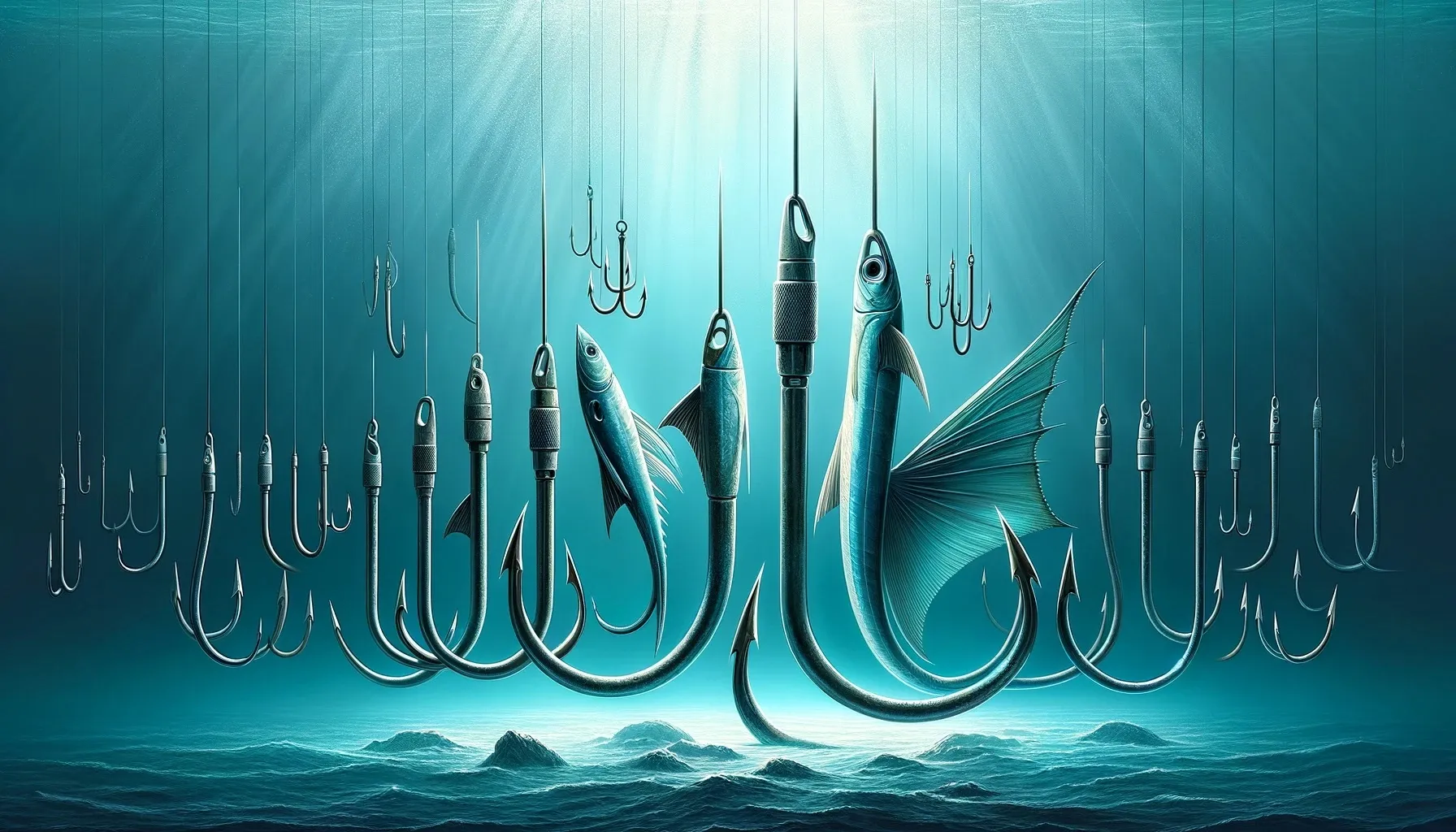
Factors to Consider When Selecting a Hook for Swordfish Fishing
When selecting a hook for swordfish fishing, you should consider the following factors: hook size, hook strength, hook type, and bait type. These factors can affect the performance and effectiveness of your hook, as well as the health and quality of your catch.
Hook Size
The hook size is the measurement of the hook from the eye to the bend. The hook size should match the size of the bait and the fish being targeted. A hook that is too small may not penetrate the fish’s mouth or may be swallowed by the fish, resulting in gut-hooking or deep-hooking. A hook that is too large may not fit in the fish’s mouth or may deter the fish from biting, resulting in missed strikes or dropped baits.
The hook size for swordfish can range from 9/0 to 17/0, depending on the size and type of bait and the fishing method. For example, a 9/0 hook is suitable for a small squid or mackerel, while a 17/0 hook is better for a large bonito or dolphin. The hook size can also vary depending on whether you are fishing at night or during the day, as swordfish tend to feed on different prey at different times.
Hook Strength
The hook strength is the ability of the hook to withstand the force of a swordfish strike and fight. The hook strength depends on the material, thickness, and shape of the hook. A hook that is too weak may bend or break under the pressure of a swordfish, resulting in losing the fish or injuring the angler. A hook that is too strong may be too rigid or heavy for the bait or the fish, resulting in reduced action or attraction.
The hook strength for swordfish fishing should be able to handle the weight and power of a swordfish, which can exert tremendous power with their radical bites and blistering runs. This is where lesser hooks can fail. The hook strength should also be able to resist the corrosion and abrasion of saltwater and the fish’s bill, teeth, and body. The hook strength can vary depending on the type and quality of the hook, as well as the fishing method and the fish behavior.
Hook Type
The hook type is the shape and style of the hook. The hook type should suit the fishing method and the fish behavior. A hook that is not compatible with the fishing method or the fish behavior may not perform well or may cause problems for the angler or the fish. A hook that is compatible with the fishing method or the fish behavior may enhance the performance and effectiveness of the hook, as well as the health and quality of the fish.
The hook type for swordfish can be either J-hooks, southern tuna style hooks, offset hooks, or circle hooks, depending on the fishing method and the fish behavior. For example, J-hooks are generally considered more productive for swordfish fishing, as they penetrate the soft flesh of the swordfish more easily and securely. However, J-hooks may also cause more damage to the fish, which can affect its survival and quality. Circle hooks are designed to hook the fish in the corner of the mouth, which can reduce the chances of the fish throwing the hook or cutting the line with its bill. However, circle hooks are not widely used amongst top swordfish fishermen.
Bait Type
The bait type is the type and size of the bait being used for swordfish fishing. The bait type should be attractive and durable for swordfish. A bait that is not appealing may not entice the fish to bite or may fall off the hook, resulting in wasted time and money. A bait that is enticing to a swordfish and durable enough to withstand multiple shots may increase the chances of hooking a swordfish.
The bait type for swordfish can be either natural or artificial, depending on the availability and preference of the angler. Natural baits are baits that are derived from living or dead fish or cephalopod, such as squid, mackerel, herring, bonito, dolphin, mullet, tuna, etc. Artificial baits are baits that are made of synthetic materials, such as plastic, rubber, metal, etc. Artificial baits can be either lures or rigs, such as jigs, spoons, plugs, skirts, etc.
Tips and Tricks to Improve Your Hook-Up Rates for Swordfish Fishing
Here are some tips and tricks to improve your hook-up rates when targeting swordfish, based on the experience and advice of expert swordfish anglers:
- Sharpen your hooks regularly: A sharp hook can penetrate the fish’s mouth more easily and securely, which can increase the hook-up rates. You can use a file, a stone, or a sharpening device to sharpen your hooks before and after each fishing trip. You can also check your hooks for any signs of dullness, rust, or damage, and replace them if necessary.
- Use a stinger hook for large baits: A stinger hook is a small hook that is attached to the main hook by a wire or a line, and is inserted into the tail or the back of the bait. A stinger hook can help prevent the fish from stealing the bait or missing the hook, which can increase the hook-up rates. You can use a stinger hook for large baits, such as bonito, dolphin, mullet, or tuna, that may not fit entirely in the fish’s mouth.
- Use a rubber band or floss to secure the hook to the bait: A rubber band or rigging floss can help keep the hook in place and prevent it from sliding or spinning, which can increase the hook-up rates. You can secure the hook to the bait, especially for soft or slippery baits, such as squid, mackerel, or herring, that may not hold the hook well. Many of the better swordfish fishermen use rigging floss in their baits, FYI.
- Drive the hook firmly when you feel a bite: Setting the hook involves engaging your reel for line retrieval to drive the hook into the fish’s mouth. Setting the hook firmly can help ensure that the hook is securely embedded in the fish’s mouth, which can increase the hook-up rates. You can set the hook firmly when you feel a bite, especially for J-hooks or southern tuna style hooks, that require manual hook setting.
Conclusion
Swordfish present many thrilling and rewarding experiences. There may be no other sport fishing endeavor that requires more skill, patience, and the right equipment than swordfishing. Choosing the right hook for your bait is one of the most important aspects of this type of fishing, as it can make or break your chances of landing a trophy. By following the guidelines and tips in this article, you can select the best hook for swordfish fishing, and improve your hook-up rates and catch quality.
Login
to leave a review.
User Reviews

Benjamin
12.12.2023
6

Robert
12.12.2023
0
Complete Dredge Pulley Setup Guide
Saltwater
12.28.2020
High Speed Wahoo Trolling Rig
Saltwater
09.07.2018
Best Bait for Wahoo
Saltwater
12.30.2023
Pinfish - A Comprehensive Guide
Saltwater
11.10.2023
0

